Hispanic Heritage Month honors the rich cultural contributions of Hispanic and Latino Americans. Established in 1968 as a week and expanded to a month in 1988‚ it celebrates history‚ art‚ music‚ and traditions. Explore Hispanic Heritage Month lesson plans PDF for educational activities.

1.1 What is Hispanic Heritage Month?
Hispanic Heritage Month is a celebration recognizing the cultural contributions of Hispanic and Latino Americans. Originally established as a week in 1968‚ it expanded to a full month in 1988. Starting on September 15th‚ it aligns with the Independence Days of several Latin American countries. This period honors the rich history‚ traditions‚ and achievements of Hispanic communities. It serves as a tool for cultural education and awareness‚ highlighting the diverse heritage of over 20 Spanish-speaking countries. Through Hispanic Heritage Month lesson plans PDF‚ educators can explore music‚ art‚ literature‚ and traditions‚ fostering inclusivity and understanding in classrooms.
1.2 When is Hispanic Heritage Month Celebrated?
Hispanic Heritage Month is celebrated annually from September 15th to October 15th. This period was chosen to coincide with the Independence Days of several Latin American countries‚ such as Mexico‚ Guatemala‚ and Costa Rica‚ which occur on September 15th or 16th. Initially observed as Hispanic Heritage Week in 1968‚ it was expanded to a full month in 1988. The celebration includes cultural events‚ festivals‚ and educational activities. Teachers often use Hispanic Heritage Month lesson plans PDF to integrate history‚ traditions‚ and contributions of Hispanic communities into their curriculum during this time.
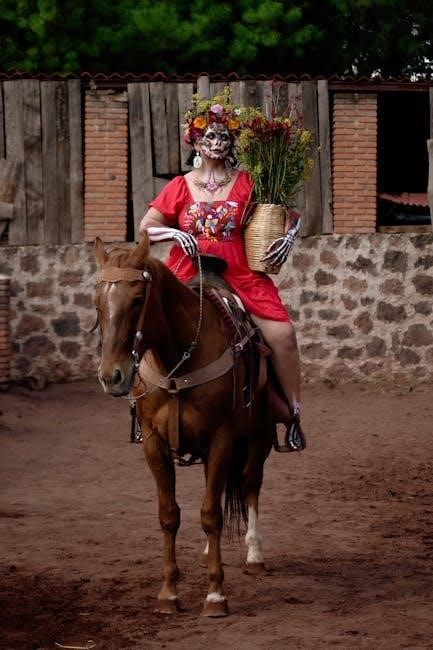
1.3 The Purpose of Hispanic Heritage Month
Hispanic Heritage Month aims to honor the contributions‚ history‚ and culture of Hispanic and Latino Americans. It provides an opportunity to recognize their achievements in various fields while fostering cultural awareness and inclusion. The celebration encourages unity and pride within Hispanic communities and promotes education about their rich heritage. Schools and educators often use Hispanic Heritage Month lesson plans PDF to integrate these themes into their curriculum. By highlighting the importance of diversity‚ the month serves as a reminder of the significant role Hispanic Americans play in shaping the nation’s identity and progress.

Historical Background of Hispanic Heritage Month
Originating as a week in 1968‚ Hispanic Heritage Month expanded to a month in 1988. Lesson plans PDFs help educators explore this evolution and its significance.
2.1 The Origins of Hispanic Heritage Week (1968)
The Hispanic Heritage Week was first established in 1968 under President Lyndon B. Johnson. This week-long celebration aimed to recognize the contributions of Hispanic and Latino Americans. It was initially observed during the week of September 15th‚ coinciding with the independence days of several Latin American countries. Lesson plans PDFs often highlight this historical milestone‚ emphasizing its role in fostering cultural awareness and unity. The week served as a foundation for what would later expand into a full month in 1988‚ broadening its educational and cultural impact across the United States.
2.2 Expansion to a Full Month (1988)
In 1988‚ Congress passed a bill extending Hispanic Heritage Week to a full month‚ signed into law by President Ronald Reagan. This expansion recognized the growing influence and contributions of Hispanic and Latino communities; The month-long celebration began on September 15‚ aligning with independence days of several Latin American nations. Lesson plans PDFs now incorporate activities spanning 30 days‚ enabling deeper exploration of cultural heritage‚ history‚ and achievements. This extension has fostered greater awareness and appreciation‚ enriching educational curricula nationwide.
2.3 Key Dates and Their Significance
Hispanic Heritage Month is marked by key dates that hold deep cultural and historical significance. September 15 signifies the independence of Costa Rica‚ El Salvador‚ Guatemala‚ Honduras‚ and Nicaragua‚ while September 16 and 18 celebrate Mexico’s and Chile’s independence‚ respectively. October 15 marks the end of the celebration. These dates are central to lesson plans‚ offering structured opportunities to explore Hispanic traditions and milestones. Educators use these dates to create engaging activities that highlight the rich diversity and contributions of Hispanic cultures‚ ensuring a comprehensive and enriching educational experience throughout the month.
Cultural Significance of Hispanic Heritage Month
Honoring Hispanic culture‚ traditions‚ and contributions fosters diversity awareness and inclusivity‚ enriching communities and educational environments through shared experiences and mutual respect.
3.1 The Importance of Cultural Education
Cultural education is vital for fostering understanding and appreciation of diverse traditions‚ histories‚ and contributions. It breaks stereotypes‚ promotes inclusivity‚ and empowers future generations to value diversity. By integrating Hispanic heritage into lesson plans‚ students gain a deeper connection to the rich cultural tapestry of Latino communities. This education not only enriches Hispanic students’ sense of identity but also broadens the perspectives of all learners. Teaching traditions‚ history‚ and contributions highlights the significance of cultural exchange and unity. Cultural education is a powerful tool for building empathy and fostering a more inclusive society‚ celebrating the richness of Hispanic heritage.
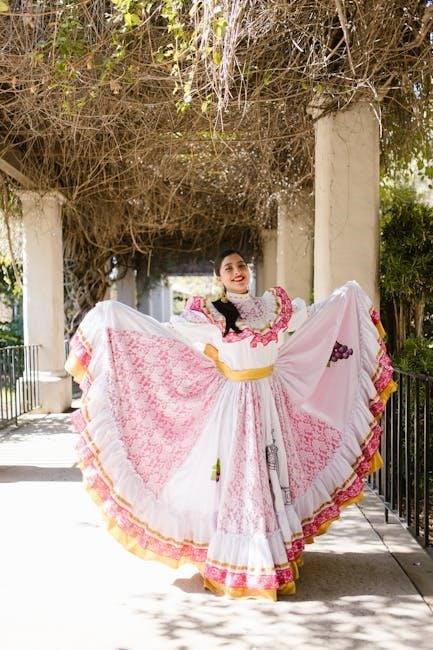
3.2 Contributions of Hispanic and Latino Americans
Hispanic and Latino Americans have made profound contributions to various fields‚ shaping the cultural‚ scientific‚ and economic landscape of the United States. Their influence is evident in the arts‚ literature‚ music‚ and cuisine‚ enriching the nation’s diversity. In science and technology‚ figures like Ellen Ochoa‚ the first Hispanic woman astronaut‚ have broken barriers. Latino entrepreneurs have fueled innovation and economic growth‚ while leaders in politics and activism‚ such as Cesar Chavez‚ have fought for civil rights. These contributions highlight the vibrant impact of Hispanic and Latino Americans on society‚ showcasing their resilience‚ creativity‚ and dedication to progress. Celebrating these achievements fosters pride and inspiration.
Engaging Activities for Hispanic Heritage Month
Engaging activities for Hispanic Heritage Month include festivals‚ traditional art‚ music‚ food tastings‚ and discussions about cultural heritage‚ fostering appreciation and understanding.
4.1 Hispanic Heritage Month Research Projects
Hispanic Heritage Month research projects encourage students to explore the rich history and contributions of Hispanic cultures. These projects can include biographies of notable figures‚ cultural traditions‚ and historical events. Students can research and present on topics like the significance of Dia de los Muertos‚ the impact of Latin American inventors‚ or the history of Spanish colonization. Additionally‚ projects can involve creating timelines‚ infographics‚ or multimedia presentations. These activities help students develop critical thinking and presentation skills while fostering a deeper appreciation for Hispanic heritage. Teachers can find detailed lesson plans and project ideas in Hispanic Heritage Month PDF resources.
4.2 Creating a Hispanic Heritage Month Bulletin Board
Creating a Hispanic Heritage Month bulletin board is a vibrant way to showcase cultural pride and education. Use colorful decorations‚ flags from Spanish-speaking countries‚ and images of notable Hispanic figures. Include key terms‚ historical facts‚ and traditional symbols like maracas or sombreros. Add student contributions‚ such as drawings or essays‚ to personalize the display. Highlight cultural elements like music‚ food‚ and festivals. Educators can find bulletin board templates and ideas in Hispanic Heritage Month lesson plans PDFs‚ making it easy to create an engaging and informative display that celebrates Hispanic heritage and fosters classroom learning.
4.3 Exploring Hispanic Music and Dance
Hispanic music and dance are vibrant expressions of cultural identity. Genres like Salsa‚ Tango‚ Mariachi‚ and Bachata reflect the diversity of Hispanic traditions. Activities include playing music samples‚ teaching basic dance steps‚ and discussing their origins. Students can research iconic artists and create presentations. Use lesson plans from Hispanic Heritage Month PDFs to guide discussions on how music and dance unite communities; Encourage students to share their favorite songs or dances‚ fostering cultural exchange. This engagement enriches understanding and appreciation of Hispanic heritage through dynamic‚ interactive learning experiences.
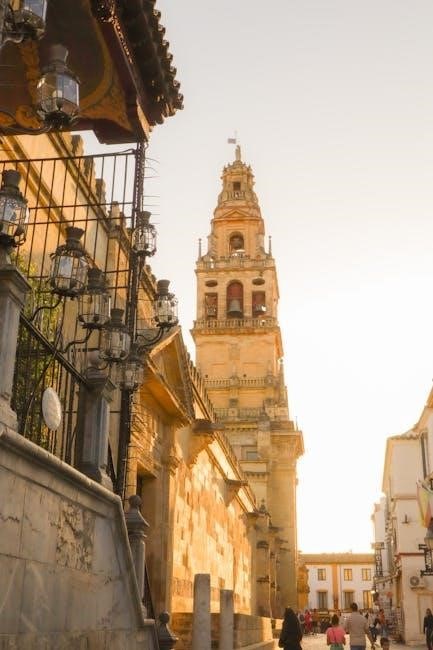
Literature and Art in Hispanic Heritage Month
Literature and art highlight Hispanic culture’s richness. Authors like Gabriel García Márquez and artists like Frida Kahlo inspire exploration. Use PDF lesson plans to guide discussions on their works and legacies‚ fostering cultural appreciation and creativity in students.
5.1 Hispanic Literature for the Classroom
Hispanic literature offers a wealth of stories and perspectives for students. Classroom lesson plans often feature works by authors like Isabel Allende‚ Junot Díaz‚ and Sandra Cisneros. These stories explore themes of identity‚ culture‚ and resilience. PDF resources provide guided reading activities‚ discussion questions‚ and analysis of key texts. Teachers can incorporate novels‚ poetry‚ and essays to engage students in understanding Hispanic experiences. These materials align with curriculum goals‚ fostering empathy and cultural awareness. By integrating these works‚ educators create a meaningful connection to Hispanic Heritage Month and its celebration of diverse voices and traditions.
5.2 Exploring Hispanic Art and Artists
Hispanic art is a vibrant reflection of culture and identity. Lesson plans often highlight iconic artists like Frida Kahlo‚ Diego Rivera‚ and Salvador Dalí. PDF resources provide biographies‚ art analyses‚ and creative projects. Students can explore techniques like muralism and surrealism‚ tracing Hispanic influences. Activities include replicating famous artworks‚ discussing cultural symbolism‚ and researching contemporary Hispanic artists. These exercises foster visual literacy and appreciation for diverse artistic traditions. By engaging with these materials‚ students gain a deeper understanding of Hispanic contributions to the global art world and their lasting impact on cultural expression.
Food and Traditions of Hispanic Heritage Month
Hispanic cuisine offers a rich variety of flavors and traditions. Popular dishes include empanadas‚ tamales‚ and paella. Festivals and family gatherings highlight cultural heritage through food and celebration.
6.1 Traditional Hispanic Foods and Recipes
Traditional Hispanic foods are vibrant and diverse‚ reflecting the rich cultural heritage of Latin America. Popular dishes include empanadas‚ tamales‚ and arroz con pollo. These recipes often feature ingredients like corn‚ beans‚ and spices‚ showcasing the region’s culinary diversity. Each country has its own specialties‚ such as Mexico’s tamales‚ Colombia’s arepas‚ and Central America’s empanadas. These dishes are not only delicious but also carry cultural significance‚ often served during family gatherings and celebrations. Incorporating these recipes into lesson plans teaches students about Hispanic traditions and the importance of food in cultural identity. They also highlight the creativity and resourcefulness of Hispanic cuisine‚ blending indigenous‚ African‚ and European influences.
6.2 Celebrating Hispanic Cultural Traditions
Celebrating Hispanic cultural traditions enriches understanding and appreciation of the heritage. Music‚ dance‚ and festivals play central roles‚ with events like the Guelaguetza in Oaxaca and Colombia’s Fiestas Patrias showcasing vibrant customs. Family gatherings‚ such as Quinceañeras and Dia de los Muertos‚ highlight cultural values like unity and respect. Traditional attire‚ like mariachi suits and embroidered dresses‚ reflects pride in identity. Incorporating these traditions into lessons helps students connect with cultural roots and foster inclusivity. These practices not only preserve history but also inspire future generations to embrace their heritage with pride and celebrate the diversity of Hispanic communities worldwide.
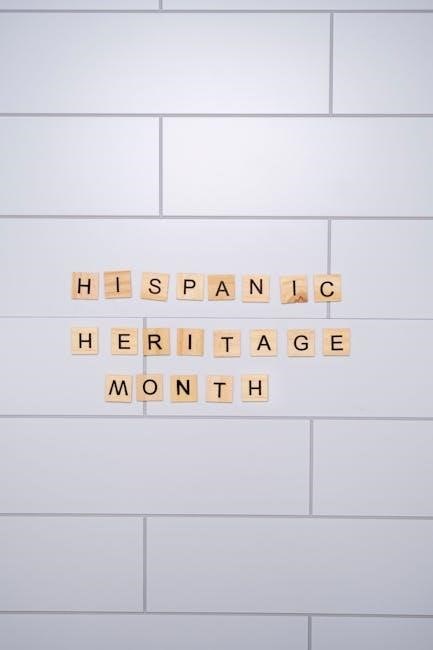
Lesson Plan Ideas for Hispanic Heritage Month
Engaging lesson plans include interactive activities‚ cultural discussions‚ and age-appropriate projects. Incorporate bilingual resources‚ art‚ music‚ and history to create meaningful learning experiences for all students.
7.1 Elementary School Lesson Plans
Elementary lesson plans focus on engaging‚ age-appropriate activities that introduce students to Hispanic cultures. Crafts‚ storytelling‚ and music align with educational goals. Teaching traditions‚ famous figures‚ and basic Spanish phrases fosters cultural awareness. Interactive projects like family recipe sharing or creating traditional art promote inclusivity. These activities are designed to be fun and educational‚ helping young students appreciate the richness of Hispanic heritage while meeting curriculum standards.
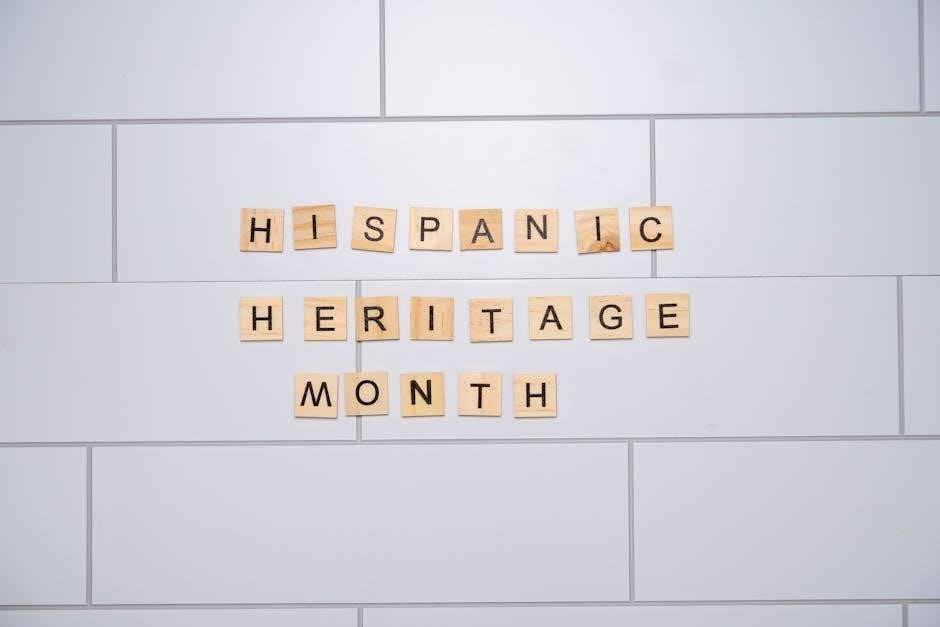
7.2 Middle School Lesson Plans
Middle school lesson plans for Hispanic Heritage Month emphasize deeper cultural exploration and critical thinking. Activities include research projects on influential Hispanic figures‚ analyzing their contributions to science‚ art‚ and history. Students engage in discussions about cultural identity‚ traditions‚ and their impact on society. Lessons incorporate primary sources‚ such as historical documents and art‚ to enhance understanding. Collaborative projects‚ like creating timelines or cultural presentations‚ foster teamwork and creativity. These plans align with curriculum standards‚ ensuring a balance of education and cultural enrichment while promoting cross-cultural understanding and appreciation.
7.3 High School Lesson Plans
High school lesson plans for Hispanic Heritage Month focus on advanced research‚ in-depth analysis‚ and critical thinking. Students explore complex themes like identity‚ immigration‚ and social justice through case studies and primary sources. Activities include analyzing speeches by Hispanic leaders‚ debating historical events‚ and creating multimedia presentations. Lessons incorporate literature‚ art‚ and music to highlight cultural contributions. Collaborative projects‚ such as documentaries or podcasts‚ encourage creativity and teamwork. These plans align with high school curriculum standards‚ fostering a deeper understanding of Hispanic heritage while promoting analytical and communication skills.
7.4 Bilingual Lesson Plans and Resources
Bilingual lesson plans offer a unique opportunity to engage students in both English and Spanish‚ fostering language skills and cultural understanding. These resources often include dual-language stories‚ translations of key texts‚ and activities that connect language learning to Hispanic heritage. Many plans integrate grammar exercises with cultural insights‚ such as vocabulary related to traditions or historical figures. Teachers can find bilingual resources through educational websites‚ language learning platforms‚ and cultural organizations. These materials are designed to promote inclusivity and support students of all language proficiency levels‚ making Hispanic Heritage Month accessible and enriching for everyone.
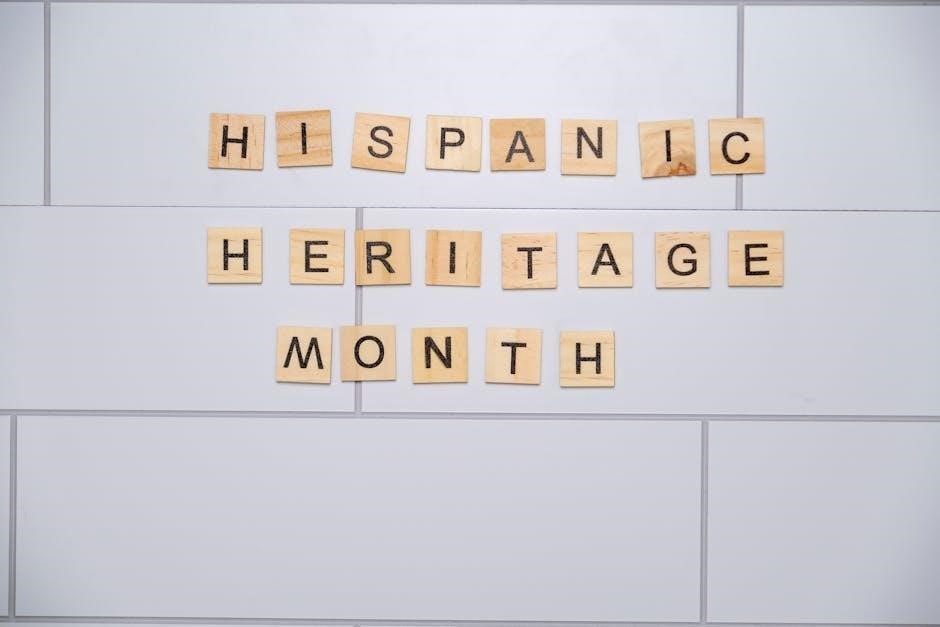
Resources for Hispanic Heritage Month
Discover a variety of resources‚ including free PDF lesson plans‚ educational videos‚ and multimedia tools‚ to enhance learning and cultural engagement during Hispanic Heritage Month.
8.1 Free PDF Lesson Plans and Activities
Access a wide range of free PDF lesson plans and activities tailored for Hispanic Heritage Month. These resources‚ available on educational websites and cultural organizations‚ cater to various grade levels. From interactive crafts to historical quizzes‚ these plans incorporate engaging activities that align with curriculum standards. Teachers can download and easily integrate these materials into their classrooms‚ fostering cultural awareness and educational enrichment. Many PDFs include worksheets‚ discussion guides‚ and multimedia links‚ ensuring a comprehensive and immersive learning experience for students of all ages.
8.2 Educational Videos and Multimedia
Educational videos and multimedia resources are essential tools for enhancing Hispanic Heritage Month lessons. Platforms like YouTube‚ PBS‚ and Smithsonian offer free‚ high-quality videos exploring Hispanic culture‚ history‚ and contributions. These resources include documentaries‚ interviews with Hispanic leaders‚ and interactive content. Multimedia elements such as virtual tours of Latin American landmarks and audio clips of traditional music enrich learning experiences. Teachers can incorporate these materials into lesson plans to create engaging‚ interactive classrooms. These resources not only educate but also inspire students to appreciate the richness of Hispanic heritage‚ making learning fun and accessible for all age groups and skill levels.
8.3 Community Involvement and Events
Community involvement is a vital component of celebrating Hispanic Heritage Month. Schools and organizations often collaborate with local Hispanic communities to host festivals‚ cultural fairs‚ and guest speaker events. These activities provide students with opportunities to engage directly with Hispanic traditions‚ music‚ and art. Many communities organize parades‚ food tastings‚ and workshops‚ allowing students to experience the richness of Hispanic culture firsthand. Encouraging participation in these events fosters cultural awareness and appreciation while building connections between students‚ families‚ and the broader community. Such involvement helps create meaningful learning experiences beyond the classroom.
Celebrating Hispanic Heritage Month fosters cultural awareness‚ education‚ and community engagement. Embrace its richness by integrating lesson plans and activities year-round to promote lasting understanding and appreciation.
9.1 The Importance of Celebrating Hispanic Heritage Month
Celebrating Hispanic Heritage Month is vital for fostering cultural awareness and unity. It honors the rich contributions of Hispanic and Latino Americans‚ promoting pride and understanding. By embracing traditions‚ history‚ and achievements‚ communities strengthen their connection to diverse cultures. This celebration also highlights the importance of inclusivity and representation‚ encouraging dialogue and collaboration. Educational resources‚ such as lesson plans‚ play a key role in sharing these stories and values. Recognizing this heritage not only enriches individual perspectives but also builds a more informed and empathetic society. Its significance extends beyond the month‚ inspiring year-round learning and appreciation.
9.2 Encouraging Year-Round Learning
Hispanic Heritage Month should inspire learning beyond its 30 days. Educators can integrate cultural lessons into year-round curricula‚ ensuring continuous exploration of Hispanic traditions‚ history‚ and contributions. PDF lesson plans provide accessible resources for teachers to incorporate these themes seamlessly. By fostering cultural awareness and pride‚ students develop a deeper appreciation for diversity. Encouraging year-round learning promotes inclusivity and enriches educational experiences. It also empowers students to connect with their heritage or explore new cultures‚ creating a more informed and empathetic community. This approach ensures the celebration of Hispanic heritage becomes a lifelong journey of discovery and growth.
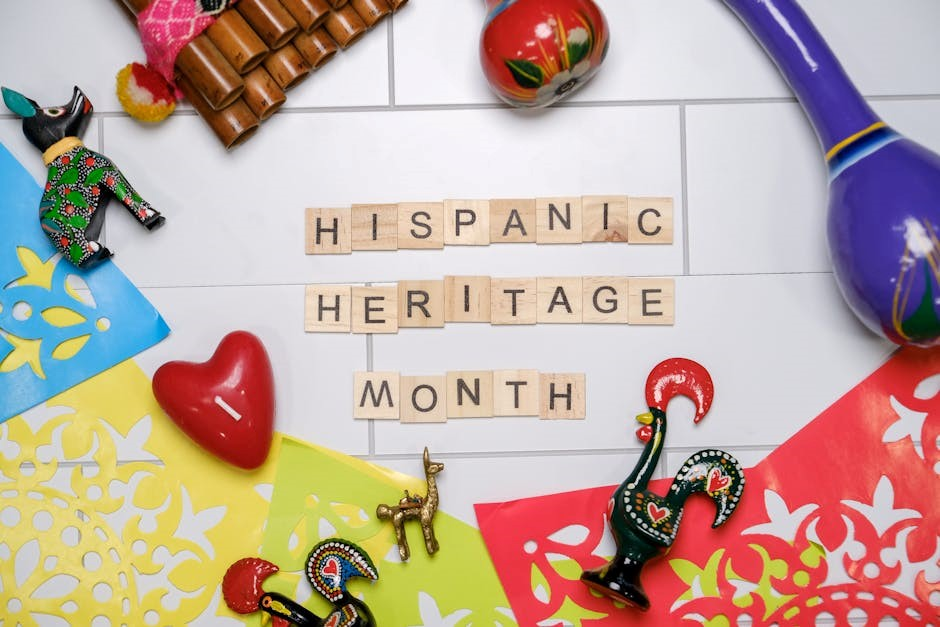
9.3 Final Thoughts on Implementation
Implementing Hispanic Heritage Month lesson plans requires thoughtful preparation and creativity. Educators should engage with community resources and integrate cultural activities into daily routines. PDF lesson plans offer structured yet adaptable frameworks‚ ensuring accessibility for diverse classrooms. Consistent implementation fosters a supportive environment for cultural exploration. Encourage students to share personal experiences‚ blending individual stories with broader historical narratives. By embracing these strategies‚ educators can create meaningful learning experiences that celebrate Hispanic heritage. This approach not only enhances cultural understanding but also nurtures a more informed and empathetic society‚ making the celebration of diversity a cornerstone of education.
